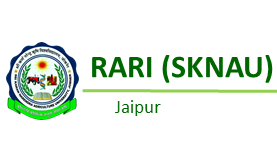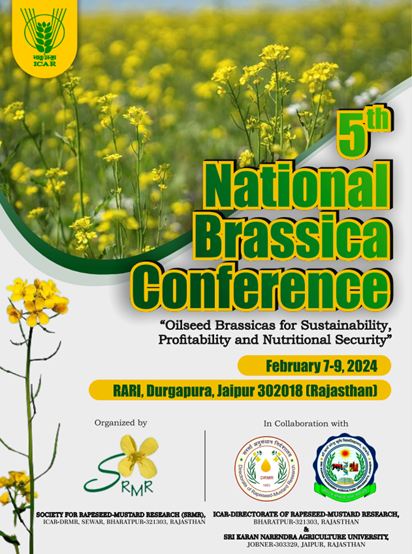History of Jaipur
The capital of Rajasthan, Jaipur was built in 1727 AD by Maharaja Sawai Jai Singh II. It is from his name that the city extracts its name. Jaipur happens to be the first planned city of India. Maharaja Jai Singh, who was only 11 years old, came into power after the demise of his father Maharaja Bishan Singh. Kachwaha Rajputs, who came into power in 12th century, are said to be Jai Singh's ancestors. Their rivalry with Sisodia Rajputs, rulers of Mewar, helped them in their alliance with Mughals. Mughals too helped the Kachwaha Rajputs against Sisodia Rajputs, resulting in Kachwahas attaining a reputed place in Rajasthan. They ruled the kingdoms of Mewar (Udaipur) and Marwar (Jodhpur) from the glorious Amber Fort. Jai Singh supported Aurangzeb's son Azam Shah in the battle of succession, which created unrest among people. But Azam Shah lost this bid to throne to his brother Bahadur Shah.
Azam Shah then demanded the removal of Jai Singh from the throne. With the ally of Mughals, Jai Singh brought himself back to power. The kingdom flourished in his reign and Jai Singh built his capital around Amber Fort and Jaipur was eventually developed as India's first ever planned city by chief architect from Bengal, Vidhyadhar Bhattacharya. Vidhyadhar Bhattacharya, following the principles of Shilpa Shastra (the science of Indian architecture), and referencing the ancient Indian knowledge on astronomy, further developed and discussed the plan with Jai Singh. It is said that the foundation of the city was laid down on 18th November 1727 by Jai Singh himself. It took minutely plans strategies and 4 years for the city's major places-the roads, the square, palaces and the fortification of the boundaries-to come to form.
After the death of Jai Singh in 1744, his sons fought for power and without a king, the city became open to intrusion by neighbouring states. Rajputs and Marathas took over most of Jaipur. Later in 1876, Maharaja Ram Singh adorned the city in pink colour, which is supposed to be associated with hospitality, to welcome the Prince of Wales (later King Edward VII) to the city; and thus it acquired the name Pink City. Ramgarh Lake was also built by Maharaja Ram Singh to provide water to the budding and prospering city. In 1922, the throne was taken over by Man Singh II, and it was at that time, buildings like secretariat, schools, and hospitals were built. After India got independence, Jaipur merged with Jodhpur, Jaisalmer and Bikaner to form the largest state of India with Jaipur as its capital.
Jaipur Location
Jaipur, is situated in the eastern border of Thar Desert, a semi-arid land. Jaipur is popularly known as the pink city and is one of the well-planned cities in India, apparently, also the first. It is positioned at an altitude of 1417 feet above the sea level. On three sides, the city is enclosed by the Aravali hills and this is why, it is safeguarded from the rough desert. In the north, it is surrounded by Sikar and Mahendragarh district; in the south by Tonk; in the east by Alwar, Dausa and Sawai Madhopur; and in the west by Nagaur and Ajmer district.
The total length of Jaipur extending from east to west is about 180 km whereas the width from north to south is about 110 km. The main rivers passing through the Jaipur are Banganga and Sabi. About 28.65 million cubic meter ground water resources are available in Jaipur. To provide the drinking water to the old city, there is Ramgarh dam on the River Ban Ganga. The main minerals of the city are copper, iron, dolomite, white marble, glass and silicon. Sambhar Lake, which is the only natural lake with salty water is also the leading source of good quality of salt in the state as well as country, is very close to Jaipur.
The city is well-known among pre-modern cities for the width and evenness of the streets which are divided into six sectors separated by broad streets of 34 m (111 ft.) wide. These sectors are called as urban quarters which are further segmented by the network of interconnecting streets. Around the east, west and south sides of a central Palace quarter, five quarters enfold with a sixth one right away to the east. This Palace quarter surrounds a sprawling palace complex i.e. Hawa Mahal, formal gardens, and a small lake. The Aravali hill in the northwest end of the Jaipur is crowned by the Nahargarh Fort which was once the home of the King Sawai Jai Singh II. From the location of Jaipur, one is able to reach the other main cities of the country through the various means of transport. One can easily reach Delhi, Agra and other nearby cities through the network of roads, air and rail.
Jaipur Monuments
The city is garlanded by the presence of number of beautiful monuments that echo the splendid history of the city. Magnificent monuments such as Jaigarh Fort, Amer Fort, City Palace, Nahargarh Fort, Gaitore, Hawa Mahal, Jantar Mantar, Jal Mahal, Rambagh Palace and Statue Circle etc. are spectacular sights which attract hordes of tourists every year. Nahargarh Fort, Jaigarh Fort and Amer Fort are the three of the oldest forts that provide great visual treat to the visitors. Gaitore is a shrine dedicated to the Maharajas of Jaipur and is known for its exquisite carvings. Situated in the heart of Jaipur is the City Palace. The Statue Circle is a tribute to the founder of Pink city, Maharaja Jai Singh II. With so much heritage on display in the form of monuments, it is no surprise then that tourists coming to this city always feel the urge to come back.
Amber Fort
The Amer Fort is situated in Amer, which is 11 kilometers from Jaipur. Amer, originally, was the capital of the state before Jaipur. It is an old fort, built in 1592 by Raja Man Singh. This fort is also very popularly known as the Amer Palace. The Amer Fort was built in red sandstone and marble and the Maotha Lake adds a certain charm to the entire Fort.
City Palace
The City Palace is a splendid example of the foresight that Maharaja Sawai Jai Singh II had. As the founder of Jaipur, he took pains to create a magnificent walled city that encloses marvels such as the City Palace. The palace is a beautiful blend of Mughal and Rajput styles of architecture. The previous royal family continues to reside in one section of the palace. Located within the walls of the City Palace, Chandra Mahal is a seven-storeyed tower. However, the ground and first floors have now been given over for the Maharaja Sawai Man Singh II Museum.
Hawa Mahal
The renowned 'Palace Of The Winds', or Hawa Mahal, is one of the prominent tourist attractions in Jaipur city. Located in the heart of Jaipur, this beautiful five-storey palace was constructed in 1799 by Maharaja Sawai Pratap Singh who belonged to Kachhwaha Rajput dynasty.
Jaigarh Fort
Of the three hilltop forts that overlook the city of Jaipur, Jaigarh is perhaps the most magnificent of them all. About 15 kilometres from Jaipur, it was built by Sawai Jai Singh II sometime in the early 18th century amidst the arid, rocky and thorn-scrub covered hills. Despite its ancient construction, it still retains most of its imposing citadel appearance. Visitors can see the world’s largest canon - Jaiban, at the fort.
Jal Mahal
One of the most wonderful sights in Jaipur is the beautiful Jal Mahal or Lake Palace. The light, sand coloured stone walls and the deep blue of the water make for a wonderful contrast. The palace appears to float in the centre of Man Sagar Lake, where its magnificent exteriors can be enjoyed by tourists.
Nahargarh Fort
The northern frontier of Jaipur is fortified by Nahargarh Fort. Situated on a rough crest of the Aravalli range, the fort, which literally means 'abode of the tigers', was built in 1734 by Jai Singh to further defend Amber. Later, in 1868, the fort was extended to its present size.
Jantar Mantar
There are plenty of observatories all over the world, but the Jantar Mantar is considered to be one of the largest observatories ever built. Combining religion, science and art, the Jantar Mantar is the name given to a series of five, magnificent structures built in Jaipur, New Delhi, Ujjan, Varanasi and Mathura. 
Albert Hall Museum
The building gets its name from The Victoria and Albert Museum in London, the inspiration for its design. The exquisitely built Albert Hall is housed in the centre of Ram Niwas Garden. Sir Swinton Jacob (who is also the mastermind behind many other palaces in Rajasthan) conceptualised and designed it using styles from the Indo-Sarcenic architecture and the Prince of Wales laid the foundation stone of the building in 1876. The museum displays a wide range of metal objects, wood crafts, carpets, stone and metal sculptures, arms and weapons, natural stones and ivory goods. It also houses a large collection of miniatures from Bundi, Kota, Kishangarh, Udaipur and Jaipur schools of art.
Places to Visit Near Jaipur
Ranthambore National Park
Situated 14 km from Sawai Madhopur, the Ranthambore Park gets its name from the Ranthambore Fort situated within its boundaries. The National Park, situated amidst the Aravalis and Vindhya ranges is spreads over an area of 392 sq.km of thick forest punctuated with pleasant waterfalls. It is home to the elusive tiger, other animals found here include chinkara, sambhar, cheetal and over 300 species of birds.
Sariska National Park
Sariska Tiger Reserve, the first tiger reserve in the world to have successfully relocated tigers, is just 200 kilometres from Delhi and 107 kilometres from Jaipur. It was declared a sanctuary in 1955 and became a National Park in 1979.
-

SRMR, Bharatpur
SRMR provides forum for interaction of different scientific and educational organizations working .....Read more
-

ICAR-DRMR, Bhratpur
DRMR is the country's premier Institute for rapeseed-mustard research... Read more
-

RARI, Durgapura
Rajasthan Agricultural Research Institute (RARI), Durgapura. ... Read more








